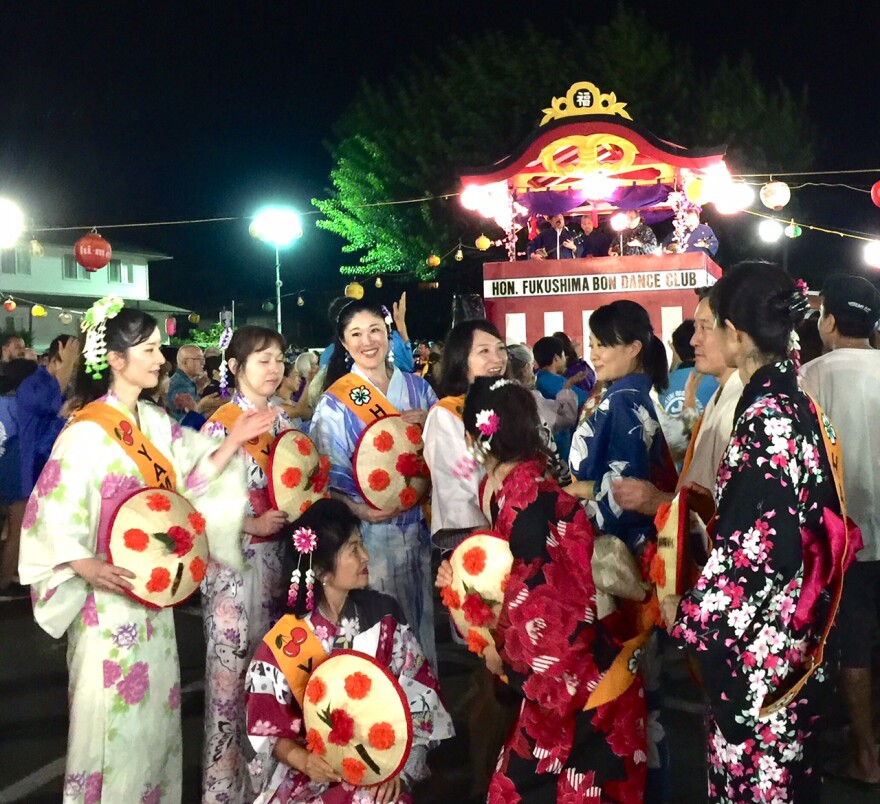According to Buddhist tradition, summer is the time of year that spirits of the dead return to visit with their loved ones on earth. Far from being a scary thing, the idea is a village-wide celebration to welcome them back. HPR’s Noe Tanigawa and Catherine Cruz discussed Hawai‘i style bon dance on The Conversation.

Howard Sugai is Vice President of Aiea Taiheiji Fukushima Ondo Yaguragumi, which means they are the Yagura (tower group), from the Taiheiji Soto Mission of ‘Aiea, who play the Fukushima dance.
Sugai is the oldest performing founding member of the group, and says he started when the group started, in 1962.
Sugai is the senior instructor of drums, big drum, flutes, and singing, and I remind you, the whole thing is not your reserved, pristine, proper sushi style experience.
The Fukushima Ondo (Fukushima Dance) can be particularly wild. The drums, the huge drums, the whistles (this group can get eight whistle players at once sometimes), the cowbell, overlay each other in audio mayhem over which the vocalist lets loose. Up until just last year, two women who were particularly strong singers absolutely lifted the experience of the song with voices halfway between a wail and a moan. I have not heard either of them this year, and truly miss them.
Times are changing, you know. While bon dances on O‘ahu can draw big crowds, up to 5-6 circles of dancers around the yagura, the churches that hold them are looking at declining congregations. This shows in the food, which traditionally has been part of the draw—meatsticks, musubi, maki sushi, andagi, fried noodles, nishime, shave ice, are all still there for the most part, at least briefly and somewhat, but with more people to cook, there would be more food. Traditionally, old timers at these temples are loath to raise prices. Bless them.

Howard Sugai made a point of saying bon dances are all unique across the island chain. The dances may have the same name but different lyrics, tune and movements! Remember, bon dances were held at every little temple in every little plantation town across the islands, Hanap?p? to Paia to Hakalau. There are still annual bon dances on L?na‘i and Moloka‘i. In the old days, this was a big social event that ran into the wee hours.
In Japan, Obon (the O is an honorific) season is nationwide. Shiraishi island in the Inland Sea is known for their particular Obon dances, performed as a vehicle to pray for the souls of warriors killed in the Gempei wars—which ended in 1185.
About 800 people live on the island, where traditionally, residents learn bon dances from kindergarten onward. During the Obon season, dances are held every evening at the seashore. Children perform dances in ways you can only manage if you know what you’re doing.

Indeed, that could be part of the pleasure. Sure, all are welcome to join in the dance, follow as well as you can, just stay in the outer circles. Still, it would be nice to know the dance enough to forget one’s self for a moment. Then, as the drums beat faster, and the singing gets wild, with lanterns swaying above your head and the crowd dancing, dancing, you could too, with real abandon.




